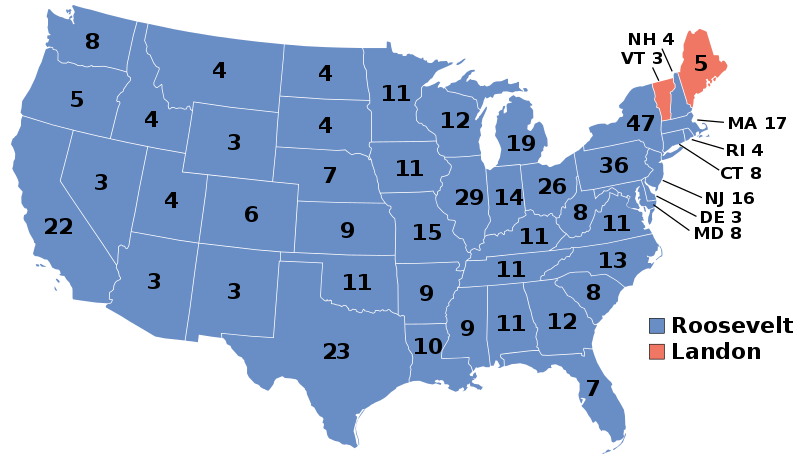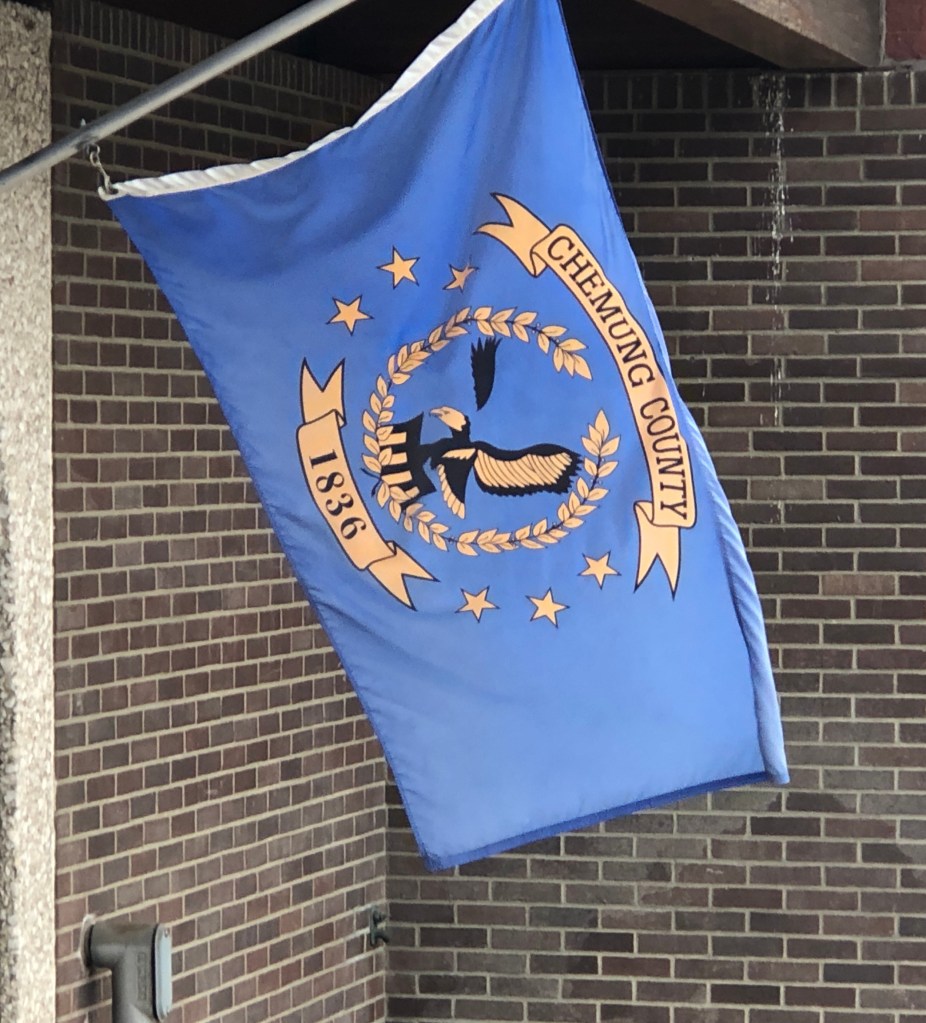I’ve had my head in data most of the day. There are some things I wanted to lead with, but we’re about to hit the big poll closings.
7:00
The first returns are in. Trump wins Indiana. No surprise. Everything else is too early to call. Trump looks like he’s leading in Florida, because of two, R leaning counties. So far he’s short of his 2016 totals, but it’s too early for that to mean anything.

Here’s something to start with. These are the states where the Candidates have an 80% or better chance of winning with the darker colors representing a probability of better than 90%. If Biden can merely hold these states, he wins.
Looking at what’s left here Biden has tons of paths to victory. Trump has but a few. That said, this could be very wrong.
7:18
MSNBC just called Vermont for Biden. No surprise. It looks like Biden is under-performing in Miami-Dade County. That’s not good, but maybe there’s something else that is going on there.
If you’re looking for bellwethers, if Trump wins NC or Maine 2, it’s going to be a long night. If Biden takes Florida or NC or Georgia, he probably has a clear path.
7:30
WV is too early to call. That may be a bad sign for Trump. Biden may be over-performing in a lot of Florida. In fact, (7:33) he just took the lead.
7:47
Florida doesn’t look good. It’s still early but my prediction that there’s a big shift toward Biden may be a bunch of crap.
17 states have poll closings at 8.
NYTimes has Trump with a 95% chance to win Florida.
Trump wins in Kentucky.
The New York Times has great tools and lots more results.

That’s 85 to 55 Biden. Things look surprisingly good in Texas though. Interesting.
McConnell wins in Kentucky. Not surprising, but disappointing.
More NYTimes. This is an awesome graphic.

8:33
Someone who supports QAnon won a House seat in Georgia. Things are going to get weird. These are the unintended consequences of gerrymandering.
8:39
Here’s a look at the Senate.

9:40
It’s going to come down to the same three states. Damn it.

12:52 PM Thursday
Well, that kind of went off the rails there; lots of things kept me from posting, sorry about that. So, where are we? Let’s start by updating the map at the top of the page

We’ve added the states that have been called. The lighter colors are states from our original map where either Trump or Biden had at least an 80% chance of winning in 538’s last projection. Nothing from that original map has changed hands. It’s still the case that if Biden holds these states, he will win the election.
Biden leads in Nevada and Arizona, which would put him at exactly 270. Trump is likely to win in Alaska and North Carolina. Georgia could go either way. Trump has a dwindling lead in Pennsylvania, but the remaining votes are likely to favor Biden.
The president, meanwhile, is doing what he claimed he would do for weeks or months. Declare victory on election night claiming to be ahead, presume that the states that went against him were rigged, and try to manufacture a victory through lawsuits.
You can’t declare victory until the votes have been counted. Part of the delay in getting the results is due to elections officials in Wisconsin, Michigan, and Pennsylvania being barred from counting early ballots before election day. They asked for relief on this, but they were rebuffed by republican state legislatures. This was part of the plan from the beginning, to give the president the illusion of leading in these states and the ability to create an atmosphere where he could claim that the election was being “stolen.” That isn’t true. What we’re seeing here is the inverse of what we saw on election night. Biden started with unrealistically large leads when the only votes that had been counted were early ones. As election night went on, we got more realistic results as the same-day votes were counted. We’re seeing the same thing in reverse now except that it’s the Biden-leading votes that are being counted last instead of the Trump-leaning ones.
Trump’s strategy here reminds me of G. W. Bush’s playbook from the 2000 recount. Turns out it’s even more offensive as a deliberate strategy than it was as an ad hoc response.
9:27 PM Thursday
The atmosphere is palpably energized. Trump’s lead in Georgia is below 2500 and the gap between the candidates is below 50,000 in Pennsylvania. It seems like we’re on the cusp of Biden pulling ahead in one of these states. Will we get a quick call after that? Don’t know.
Meanwhile, the president seems to be flailing. Claire McCaskill called the president’s speech a low point in American history. A presidential candidate calling an election into question is unprecedented. There’s a lot to unpack there; it was strange and troubling. He clearly thinks Red Ballots Matter More. But that isn’t true. All Ballots Matter.
9:40 pm
Now Georgia is within 2000 votes.
9:49 pm
Here’s another nice graphic from the NYTimes.

10:00 pm
What’s the state of the race? Trump leads in Pennsylvania and Georgia, but those leads are evaporating. Biden leads in Nevada and Arizona. The lead-in Arizona is shrinking, but the Biden campaign is confident it will hold. Trump will almost certainly win Alaska and looks safe in North Carolina.
10:28 pm
The palpable excitement had dissipated.
10:43 pm
The gap in PA is down to 26,000. According to MSNBC, It looks like Biden will overtake Trump at 4 or 5 am. I think earlier.
11:00 pm
I’m holding on for a bit to see if we get an update on Georgia. If Biden wins Georgia, that will put him up to 269 electoral votes, 1 vote away from victory. In the unlikely event that Trump wins everything else, that would be a 269-269 tie.
In that case, after the Electoral College votes, the election is decided by the House of Representatives. The democrats control the house, so you might think that would be good news for Biden. It isn’t. It’s a Trump victory. Why? The representatives don’t vote for President, the states do. Currently, the Republicans control 26 state delegations which would be enough for him to win. That’s unlikely to change after the election.
11:18
That’s enough for tonight. I’ll be back when there’s something to report.
11:22 am Friday
Good Morning! A lot has happened overnight. Biden pulled ahead in Pennsylvania and Georgia of all places. Here’s an appropriate song for this morning! I give you “Better Things” by the Kinks.
This means that Biden is leading in four of the six uncalled states with a total of 306 electoral votes. His lead in Pennsylvania is growing. Meanwhile, the latest results from Maricopa county make it unlikely that the president will be able to pull ahead in Arizona. In Nevada the latest votes being reported had Biden’s lead at about 22,000. At least one outfit has called the election for Biden.

11:00 pm
Back at it again. The last update from Pennsylvania put Biden’s lead at more than 0.5%. [Edit: It only looked that way with the rounded numbers the networks were using, this didn’t actually happen until a bit later.] That’s out of automatic recount territory. I think that will impel a call for Biden in the Pennsylvania race and then consequently the presidency.
Nothing looks especially different on the teevee at this point.
As an aside, on the news this (Friday) afternoon I saw a group of voters in Maricopa County AZ who were in line at the elections office in order to “cure” their ballots.
Evidently, in Arizona, if there’s an error on your ballot the Board of Election will contact you and allow you to come in and fix the discrepancy. This startles me and it’s an important statement about the importance of the franchise. Everyone’s vote is important and everyone’s vote should count. That’s a welcome and stark contrast to the politicians who are seeking to prevent votes from being counted, merely because they don’t think they’ll like the outcome.
8:34 am Saturday
I’ve been watching elections coverage for about an hour now. MSNBC seems to think that a call in the election is imminent. More data is on the horizon, probably at 9:00 am.
Joe Scarborough started his show by calling the 1976 Republican nomination for Gerald Ford. There’s a lot reasonable takes on Scarborough, but it seems certain that he should not do comedy.
These folks made an excellent point on the timing of the vote count. We know that the Governors of Wisconsin, Michigan, and Pennsylvania tried to allow their elections officials to start processing the early and mail-in ballots before the elections, but were stopped by the republican state legislatures. That led to a night that looked really good for the president. That was by design. Trump was planning to use the good coverage to try and force an early end to the counting and create an illusion of malfeasance. It’s an amazing disconnect on the order of the notion that we only have cases of coronavirus because we’re testing for it.
To America’s credit, by and large the president’s rhetoric was ignored and we continued to count the votes in a dignified and orderly manner. I’ve seen a number of secretaries of state being interviewed and doing news conferences and that’s dong nothing but increase my confidence in the system.
If these states had counted the mail-in ballots early, the focus on election night, the focus would have been on these states. If would have been clear from the start that Biden had a commending lead in Pennsylvania at least. The character of the coverage would have been fundamentally different and there would have nothing that even seemed suspicious.
9:10 am
From the Biden campaign. “Today seems to be the day.”
11:08 am
Another update from Maricopa County, Arizona. Trump won these votes with about 58%, cutting Biden’s lead to 20,500. If Trump does as well with the rest of the Maricopa County, that will cut Biden’s statewide lead to about 15,000. If I’m not mistaken, everything else in AZ is small.
11:30 am
That’s it! NBC is calling it for Biden!
11:35 am
Almost everyone’s on board pretty quickly. And it’s a little funny to see who the one holdout is.

11:40 am

This is a great moment. Here’s a song for today.
7:23 pm
We might be nearing the end of our Election Night Live Blog, but we’re here until after the President-Elect’s speech tonight.
It’s been genuinely moving to see all the people who are absolutely jubilant about the results of the election. It might be a function of the call being made on a Saturday morning, but I don’t remember ever seeing this kind of reaction to an election with the possible exception of 2008. The sense of relief in the crowds is palpable. The people partying talked about feeling hopeful, safer, and represented in ways that they haven’t for the last four years. In 1920 Warren Harding promised us a return to normalcy and one hundred years later we may actually have one.
And speaking of 100 years ago, it’s been a century since the passing of the 19th Amendment which didn’t give women the vote, but recognized that they should have had the franchise all along. There can be no more fitting commemoration of that anniversary than electing our first female vice-president.
8:28 pm
“The people have chosen empathy.” Nice.
8:58 pm
You can watch the both speeches here.
Great remarks from both Harris and Biden. I liked the homages to both Obama and MLK. This is what a president is supposed to sound like and the commitment to be the President of all America is as welcome as it had been sorely missed. “Now let’s give each other a chance… this is a time to heal.”
Here’s the song (although not the version) that was playing when Biden concluded his remarks.










